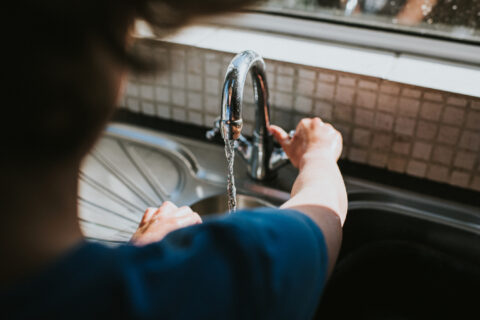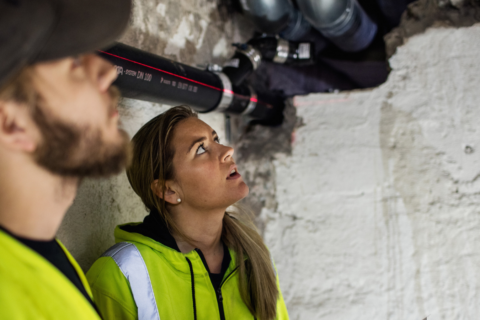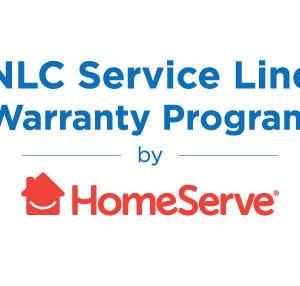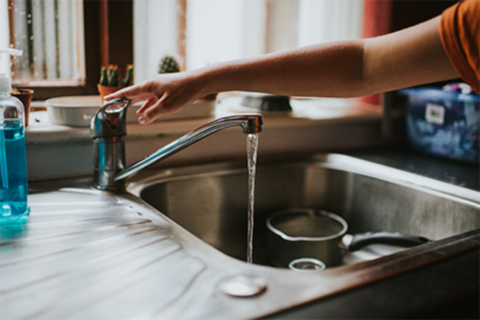Low-income communities and communities of color are at particular risk to lead exposure. They are not only disproportionately exposed to lead in drinking water but, as analysis of a Washington, DC case study suggests, there are race- and income-based disparities in lead pipe replacement rates for both capital improvement and customer-initiated lead service line removal programs.
Lead service line (LSL) replacement is expensive but necessary. The most common way people ingest lead is through drinking water from lead water service lines that have corroded. As cities navigate the LSL replacement process, equity must be a central consideration. Lead exposure is unsafe at any level, especially for children. Employing equitable strategies for LSL replacement will help ensure that everybody has access to safe, clean drinking water.
Though federal funding for LSL replacement exists, it is not enough to meet the need in communities across the country. Many federal funding opportunities also come in the form of loans that must be repaid, which could further exacerbate affordability issues. Forthcoming changes to EPA’s Lead and Copper Rule speak to urgent public health goals but will amplify the challenge by adding cost and compliance burdens for local governments on lead service line testing, monitoring and replacement. NLC continues to advocate for grant funding for local water infrastructure projects.
Identifying Community Needs
The first step in replacing LSLs is understanding the scale of the problem. EPA’s Lead and Copper Rule Revisions dictates that cities must complete LSL inventories for all service lines in their distribution system by October 16, 2024. EPA offers guidance on creating a service line inventory, and other tools such as ArcGIS Lead Service Line Inventory Solution can help cities create and maintain LSL inventories.
Once a municipality has an inventory prepared, it should begin creating a replacement plan, sequencing areas of priority for an LSL replacement program based on population vulnerabilities and environmental justice considerations. Environmental justice mapping tools, like EPA’s Environmental Justice Screen and Mapping Tool, can be useful in identifying areas of highest need. It is essential to take steps to reach areas of the community with higher concentrations of the most vulnerable populations: people living at or below the poverty line, historically BIPOC communities, pregnant women and women of childbearing age, and youth. Areas with higher concentrations of youth-serving organizations such as daycares, youth centers and schools should also take priority. Rental homes must be a focus as well, as renters often earn a lower income and non-resident homeowners have less incentive to replace lead pipes on their property.
Balancing Cost with Effectiveness
One major challenge in creating an LSL replacement program is deciding between a partial or full line replacement program. Partial line replacement means that the LSL is replaced on the public side and property owners are responsible for replacing the portion of the pipe on their side of the property line if they choose to. Conversely, in a full line replacement program, the service line is replaced on both sides of the property line in tandem.
Partial line replacement is cheaper for cities to implement and avoids the need to force homeowners who are unwilling or financially unable to replace their pipes to do so. However, partial LSL replacement can increase lead contamination risks as construction and digging release particulate lead and the new pipe materials encourage erosion of the older lead pipes. It also makes the replacement process slower by placing the onus on property owners to decide to replace their pipes and make arrangements for the replacement. For rental homes, landlords are less likely to prioritize those upgrades, meaning that renters continue to be exposed to lead in their water.
Full line replacement programs are the best practice for eliminating lead contamination risk, but they still leave the question of cost to homeowners. Some cities, like Denver, CO, subsidize full LSL removal for low-income homeowners. The program is subsidized through water bills, bonds and sales of new connections. In some cases, however, state and local restrictions on how ratepayer funds can be used prevent water utility funds from being used to subsidize LSL replacement on private property. In these cases, state and federal grants can help. True to its name, Eau Claire, WI, passed a resolution requiring property owners to replace LSLs discovered on their land within 90 days of the lead being discovered. Homeowners can receive up to $2,600 from the city in financial support for pipe replacement thanks to a grant from the Wisconsin Department of Natural Resources. Toledo, OH, has gone even further, combining federal and state funding sources through ARPA, EPA’s Environmental Justice Grant Program, HUD’s Community Development Block Grant Program and Ohio EPA’s Water Replacement Loan Program to replace all lead pipes in the city at no cost to property owners.
When programs are funded even in part by utility bills, cities and water utilities should be mindful that rates do not increase to the point of unaffordability. Low-income people face a disproportionate burden from increasing utility rates and should not have to risk their utilities being shut off because of an inability to pay or be forced to choose between paying utility bills and other necessities.
Identifying Key Partners
Community engagement and partnerships are helpful in broadening awareness of, building trust in, and increasing access to LSL replacement programs. Outreach and collaboration with public health centers, community centers and organizations serving BIPOC communities, low-income people, and other vulnerable populations are crucial to building equitable replacement programs. Community partnerships also improve public communication about exposure risks and advanced notice of construction disruptions.
The LSL Replacement Collaborative is another useful resource for cities. It provides a toolkit of strategies for LSL replacement, including a step-by-step guide for conducting an equity analysis of LSL replacement programs. The equity analysis guide is malleable to fit communities of all sizes, consider historical development patterns and provide strategies for effective engagement and communication about LSL replacement programs.
Communities in Connecticut, New Jersey, Pennsylvania and Wisconsin can seek technical assistance through EPA’s Lead Service Line Replacement Accelerators initiative to address lead prevalence in underserved communities. Through the program, participating cities can access support for applying for State Revolving Funds and creating LSL inventories, community engagement plans and LSL replacement plans.
Replacing LSLs will require largescale workforce deployment. Investing in LSL replacement could create thousands of jobs nationwide. Yet, with current workforce shortages for infrastructure jobs, cities can also turn to partners such as HomeServe USA for additional support in removing lead service lines. All NLC member cities have access to HomeServe through their membership.
EPA regulations with tight timelines, historic federal funding that is still not enough, and deep public health and environmental justice concerns about the ongoing prevalence of millions of lead pipes, all combine to place cities in a challenging position. NLC is here to help cities find tools to navigate inventorying, monitoring and funding replacement of their lead pipes.









